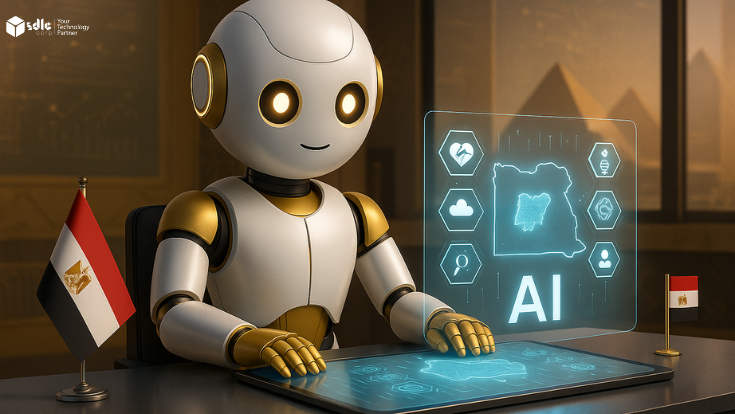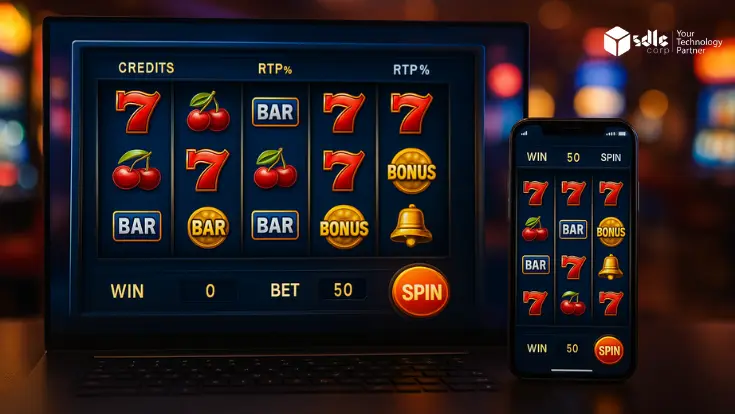GameFi, a fusion of “gaming” and “finance,” is a rising trend in the world of blockchain and decentralized finance (DeFi). Traditionally associated with play-to-earn (P2E) games and non-fungible token (NFT)-based in-game assets, GameFi introduces a unique intersection between virtual entertainment and economic incentives. However, the use of game mechanics is not restricted solely to the gaming industry. These mechanics have found their way into various sectors of the real world, creating novel opportunities for engagement, incentivization, and user retention.
In this blog, we will explore the real-world applications of game mechanics beyond the confines of gaming. We’ll discuss how these techniques have revolutionized industries such as finance, healthcare, education, and even the workplace. We will also cover the potential for GameFi to further influence other fields through blockchain technology, NFTs, and decentralized finance. By the end of this exploration, it will be clear that the use of game mechanics offers tangible benefits across many industries beyond entertainment, further amplifying the need for Blockchain Development Services, DeFi Development Solutions, and collaboration with a Web3 Game Development Company.
Experience the Next Era of Gaming: Play, Earn, and Thrive with GameFi
Our expert team is here to guide you every step of the way.

Understanding Game Mechanics and Their Influence
Game mechanics refer to the rules and systems that govern how players interact with a game. Elements like points, levels, rewards, and achievements are designed to motivate players and enhance their experience. By applying these principles outside the context of gaming, companies and industries can incentivize behavior, drive user engagement, and foster loyalty.
The application of game mechanics beyond gaming is often referred to as “gamification.” The basic premise is to make non-gaming experiences more engaging and rewarding by using principles from game design. The integration of gamification into various fields has led to some compelling results.
Key Elements of Game Mechanics
- Points and Rewards: Points are awarded for completing tasks or achieving goals. In non-gaming sectors, this can translate into points for completing purchases, finishing courses, or engaging with a product or service.
- Leaderboards: Ranking users against others is a powerful motivator for individuals to perform better.
- Levels: Providing different levels of achievement gives users something to strive for, rewarding continued participation.
- Challenges and Quests: In a non-gaming context, these can represent tasks or goals that offer rewards or recognition upon completion.
Now that we have a grasp of what game mechanics are, let’s dive into the real-world applications of these elements in various sectors.
1. Game Mechanics in Finance: Decentralized Finance (DeFi)
One of the most innovative applications of game mechanics in real-world scenarios is within the DeFi (Decentralized Finance) space. Blockchain technology has allowed developers to apply gamified elements to financial systems, transforming the way users interact with digital assets, investments, and markets.
Yield Farming and Staking
In the world of DeFi, yield farming and staking introduce game-like mechanics where users are rewarded for contributing liquidity to decentralized exchanges or staking their tokens to support network security. These rewards often come in the form of new tokens or a percentage of transaction fees, much like a player earning rewards for completing tasks in a game.
For example, platforms like Yearn Finance allow users to optimize their earnings by moving funds between different liquidity pools, creating a competitive, gamified environment where participants strive for the best returns. Just as a player would optimize their in-game strategies, DeFi users must carefully plan their actions to maximize their profits.
Gamified Tokenomics
GameFi-inspired tokenomics are becoming popular in the DeFi space. Projects are now leveraging staking, reward pools, and governance tokens to incentivize user participation and engagement. Users can earn governance tokens, much like in-game achievements, allowing them to participate in key decisions regarding the platform’s development and direction. This creates a sense of ownership and commitment.
2. Game Mechanics in Healthcare: Gamifying Wellness and Treatment
Healthcare is another industry benefiting from the application of game mechanics, particularly in promoting wellness and patient engagement. The goal of gamification in healthcare is to motivate users to improve their physical and mental health by rewarding positive behaviors and habits.
Fitness and Wellness Apps
Popular apps like Fitbit and Nike Training Club have adopted game mechanics such as daily challenges, achievements, and rewards to motivate users to exercise and maintain healthy lifestyles. Fitbit, for example, allows users to compete against friends and family in step challenges, creating a sense of community and competition, which ultimately promotes healthier behaviors.
Medical Treatment and Patient Compliance
Beyond fitness, gamification is also used to ensure patient adherence to medical treatments. Apps that remind users to take their medications on time or complete specific exercises in their physical therapy routines have incorporated game-like features. Users may earn rewards or track their progress on leaderboards, improving compliance and increasing the likelihood of successful treatment outcomes.
Gamified healthcare apps have demonstrated that people are more likely to stick with routines or treatments when they feel they are making progress, being rewarded, or competing with others.
3. Game Mechanics in Education: Enhancing Learning Through Gamification
Education is another sector where game mechanics have taken center stage, transforming traditional learning environments into more interactive and engaging experiences. Gamification in education aims to improve motivation, knowledge retention, and learning outcomes.
Gamified Learning Platforms
Platforms like Duolingo and Khan Academy are prime examples of how game mechanics can enhance learning. Duolingo, a language-learning app, allows users to earn points, level up, and compete on leaderboards as they progress through lessons. This turns language learning into a more rewarding and fun experience.
Similarly, Khan Academy has integrated game mechanics such as badges and progress tracking to motivate students. The gamification of learning makes the process more enjoyable, increasing the likelihood that users will continue their studies and achieve their goals.
Gamifying Corporate Training
Companies are also applying gamified learning to train employees. By turning tedious or complex material into interactive challenges, companies ensure that their workforce remains engaged. For example, a company might offer rewards for completing training modules or use quizzes with leaderboards to test employee knowledge, making the learning process more enjoyable and effective.
4. Game Mechanics in the Workplace: Enhancing Productivity and Collaboration
The use of game mechanics in the workplace is growing in popularity as companies strive to improve productivity, employee engagement, and collaboration. Gamification transforms routine tasks and goals into competitive, engaging experiences that encourage workers to stay motivated.
Employee Recognition and Rewards Programs
Many companies have adopted game-like recognition systems where employees can earn points for achieving their goals, contributing to team success, or demonstrating exemplary behavior. These points can then be redeemed for rewards such as bonuses, additional vacation days, or even material goods. By introducing competition and rewards into the workplace, companies can foster a positive, collaborative environment where employees are motivated to perform at their best.
Gamifying Teamwork and Problem Solving
Game mechanics are also used to promote teamwork and creative problem-solving. By introducing collaborative challenges, companies can encourage employees to work together towards common goals. For instance, using gamified project management software, teams can compete to complete tasks faster or more efficiently, driving performance and productivity.
5. Game Mechanics in Marketing: Customer Engagement and Loyalty Programs
Marketing is another area where game mechanics have made a significant impact. Brands are now using gamification to engage customers, build brand loyalty, and increase sales.
Loyalty Programs and Rewards
Companies like Starbucks and Sephora use game mechanics in their loyalty programs. Customers earn points for making purchases, engaging with the brand, or referring friends. These points can be redeemed for rewards, incentivizing continued engagement and brand loyalty.
Interactive Marketing Campaigns
Gamified marketing campaigns allow brands to engage their customers more directly. For example, McDonald’s “Monopoly” campaign turns purchasing items into a game where customers can collect tokens and win prizes. These types of campaigns create excitement and engagement, driving both sales and brand awareness.
The Future of Game Mechanics in Real-World Applications
As blockchain technology, NFTs, and decentralized finance continue to evolve, the potential for real-world applications of game mechanics will only expand. We are already seeing how GameFi principles are reshaping industries like finance, healthcare, and education, but the future holds even more opportunities.
Imagine a world where governments use gamification to incentivize citizen participation in civic duties, or where energy companies reward customers for reducing their carbon footprints using blockchain-based rewards systems. The possibilities are limitless.
By collaborating with a Web3 Game Development Company or an NFT Development Company, industries can harness the power of gamification to engage users in ways previously thought impossible. The Metaverse Game Development sector, in particular, stands to benefit from the intersection of gamification and virtual worlds, creating entirely new economies and experiences.
GameFi blends gaming with real-world rewards, offering players the chance to earn and thrive in virtual economies.

Conclusion
GameFi is no longer confined to the gaming world. Its principles are finding applications across multiple industries, improving engagement, motivation, and productivity. From finance and healthcare to education and marketing, game mechanics are being used to revolutionize how people interact with products, services, and even each other. As we look toward the future, the collaboration between traditional industries and innovative solutions like Blockchain Development Services, DeFi Development Solutions, and Metaverse Game Development will continue to unlock new opportunities for gamification to make a positive impact on the world.
By harnessing the power of game mechanics, businesses and industries can create more interactive, rewarding, and engaging experiences that appeal to the modern user, blending entertainment with tangible results in the real world.



